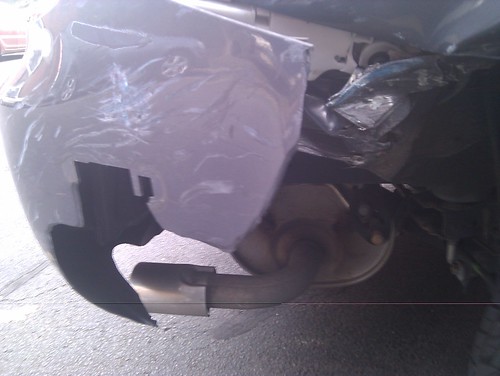NOTE: This is an extremely technical blog post intended only for very serious embedded Linux developers. It was written mostly for the benefit of Google. I wish that this posting had existed over the weekend when I was looking at this.
So I now have several Texas Instruments BeagleBoard-xM boards based upon the TI DM37x series Cortex-A8 based SoC. The “xM” is an improvement on the original BeagleBoard that features the improved DM3730 in place of the original OMAP3530. Like its predecessor, the DM37x series includes Texas Instruments’ on-chip “ICEpick” JTAG TAP controller that can be used to selectively expose various additional JTAG TAPs provided by other on-chip devices. This facilities selective exposure of these devices (which may not be present in the case of the “AM” version of the chip, or otherwise might be in a low-power or otherwise disabled state), because it is nice to be able to ignore devices we don’t want to play with today. The ICEpick itself can handle up to 16 devices, although the majority of those are “reserved” for the scarily more complex days of tomorrow. If you want some of the details, refer to chapter 27 of the DaVinci Digital Media Processor Technical Reference Manual (TRM) (under “User Guides”).
The full possible DM37x JTAG chain contains the following devices (in OpenOCD ordering, from TDO to TDI – the inverse of the physical ordering of the bus, which starts with the ICEpick at 0 and ends with the DAP at 3): DAP (Debug Access Port), Sequencer (ARM968), DSP, D2D, ICEpick. It’s the last device in the chain that we really care about because it is through the Debug Access Port that we will poke at the system memory address space and registers within the Cortex-A8 processor. At Power ON, the default JTAG chain configuration will depend upon the strapping of the EMU0 and EMU1 lines (which are exposed on the Flyswatter as jumpers adjacent to the JTAG ribbon cable). If both of these lines are high (pins 1-2 not 0-1 on the Rev-B Flyswatter, i.e. nearest to the ribbon cable) – which they had better be if you want an “out of the box experience” – then the only device to appear in the chain will be the ICEpick. OpenOCD is expecting this, because it contains special macro functions that will instruct the ICEpick through its control command registers to expose any additional TAPs after initialization (we actually only want the DAP in the default case, which is how OpenOCD will behave for you if you don’t change it). Each time a new TAP is exposed, the OpenOCD JTAG logic will do the necessary state transition for it to take effect (for the chain to lengthen or contract according to devices appearing and disappearing in the chain).
The default upstream version of OpenOCD does not work with BeagleBoard-xM at the moment (as of v0.4.0-651-gc6e0705 – last modification on December 8th) because some logic was recently added to master that attempts to handle busticated DAP ROM addresses on a Freescale (not Texas Instruments) IMX51 processor, which is very similar to the DM37x. Due to this “fixup”, the DM37x’s correctly provided ROM table information will be “fixed” to use the wrong DAP address, which won’t work. For the moment, find the following loop in src/target/arm_adi_v5.c:
/* Some CPUs are messed up, so fixup if needed. */
for (i = 0; i < sizeof(broken_cpus)/sizeof(struct broken_cpu); i++)
if (broken_cpus[i].dbgbase == dbgbase &&
broken_cpus[i].apid == apid) {
LOG_WARNING("Found broken CPU (%s), trying to fixup "
"ROM Table location from 0x%08x to 0x%08x",
broken_cpus[i].model, dbgbase,
broken_cpus[i].correct_dbgbase);
dbgbase = broken_cpus[i].correct_dbgbase;
break;
}
Wrap it with a #if 0 (and don't forget to also comment or define away the definition of "i") such that it won't take effect. Then, if you have a Rev-B xM you will also need to edit the file tcl/target/amdm37x.cfg to add a new TAPID for the undocumented revision recently made to the ICEpick on these TI parts (this is backward compatible with the Rev-A because it will now look for both):
...
switch $CHIPTYPE {
dm37x {
# Primary TAP: ICEpick-C (JTAG route controller) and boundary scan
set _JRC_TAPID 0x0b89102f
set _JRC_TAPID1 0x1b89102f
}
...
...
# Primary TAP: ICEpick - it is closest to TDI so last in the chain
jtag newtap $_CHIPNAME jrc -irlen 6 -ircapture 0x1 -irmask 0x3f \
-expected-id $_JRC_TAPID -expected-id $_JRC_TAPID1
Then make and install the OpenOCD binaries (ensure you have the free FTDI libraries installed, and configure with “configure –enable-maintainer-mode –enable-ft2232_libftdi”). You can now use OpenOCD with the xM revA or B.
Jon.
